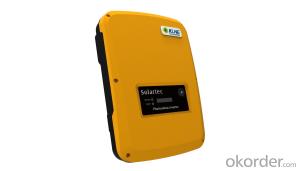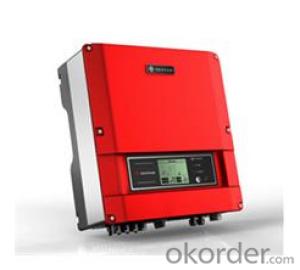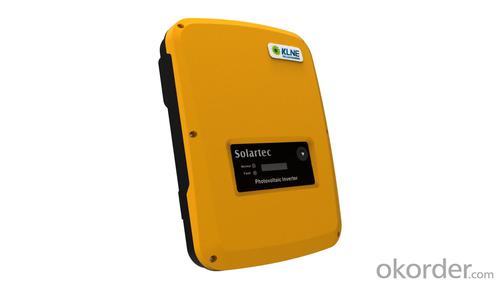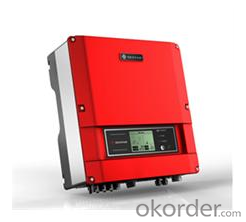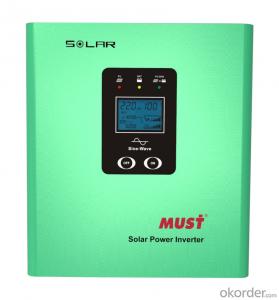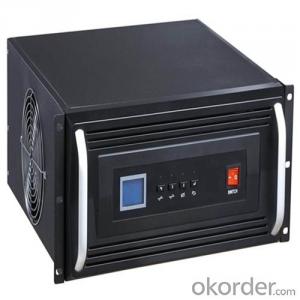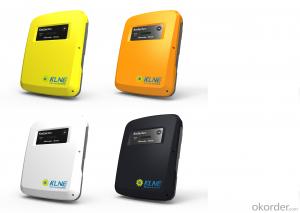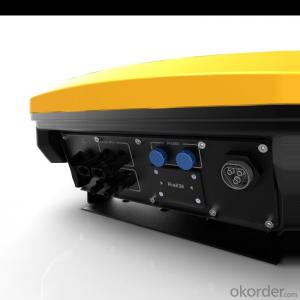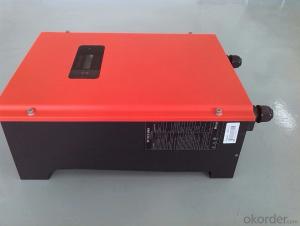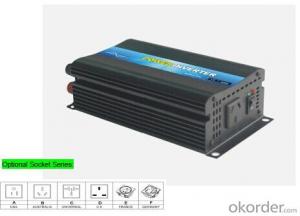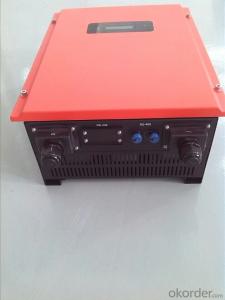300W Solar Inverter Off-Grid Type Solo-70 Series
- Loading Port:
- Shanghai
- Payment Terms:
- TT OR LC
- Min Order Qty:
- 10 unit
- Supply Capability:
- 1000 unit/month
OKorder Service Pledge
OKorder Financial Service
You Might Also Like
Product Description:
This system can keep 3 energy-saving bulbs with 11W working for 6 hours per day and a 5W radio working for 5 hours a day.
Output voltage:5V d. c. (USB port) / 12V d. c.
It can work for 3 successive rainy days.
● System voltage:12V
● Power:70W ● Dimensions of box:475*250*365mm ..
● Net weight of the box:9kg .
● Output DC current:5 phases..
● Charge and discharge current:10A..
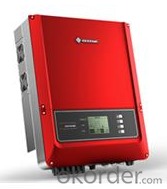 Product Advantages:
Product Advantages:
Product Advantages:
Powered by DC current
Can used out of doors
High effiency and low noise
FAQ
What is your payment terms?
We accept T/T payment, normally we need 20% T/T in advance, 80% payed before shipment.
What is your packing system?
We put the sistem in the wooden box.
Can you do OEM service?
Yes we can, but we need to do it with a certain order quantity.
- Q: Can a solar inverter be used with a string inverter system?
- No, a solar inverter cannot be directly used with a string inverter system. A solar inverter converts the direct current (DC) generated by the solar panels into usable alternating current (AC) electricity. On the other hand, a string inverter manages the output of multiple solar panels connected in series, converting the DC power from the panels to AC power for the grid. These two types of inverters serve different functions and are not compatible with each other.
- Q: Are there any safety concerns with solar inverters?
- Yes, there can be safety concerns with solar inverters. Some potential safety issues include electrical shocks, fire hazards, and improper installation leading to system malfunctions. However, these risks can be minimized through proper installation, regular maintenance, and using high-quality inverters that meet safety standards.
- Q: Can a solar inverter be used with different types of grounding systems?
- Yes, a solar inverter can be used with different types of grounding systems. Solar inverters are designed to be compatible with various grounding configurations, including both grounded and ungrounded systems. However, it is important to ensure that the specific inverter model is compatible with the desired grounding system to ensure safe and optimal operation.
- Q: How is the output voltage of a solar inverter regulated?
- The output voltage of a solar inverter is regulated through a combination of voltage control algorithms and power electronics components. These algorithms continuously monitor the voltage level and adjust the inverter's operation accordingly to maintain a stable output voltage. Additionally, power electronics components like DC-DC converters and inverters are used to convert the variable DC voltage generated by the solar panels into a stable AC voltage output that matches the grid requirements.
- Q: Can a solar inverter be used with a solar air conditioning system?
- Yes, a solar inverter can be used with a solar air conditioning system. The solar inverter helps convert the DC power generated by the solar panels into AC power that is suitable for powering the air conditioning system. This allows for the utilization of solar energy to cool or heat a building, making it an eco-friendly and energy-efficient solution.
- Q: How do you connect a solar inverter to solar panels?
- To connect a solar inverter to solar panels, the DC output of the solar panels needs to be connected to the DC input of the inverter. This is usually done using appropriately sized and rated solar cables and connectors. The positive terminal of the solar panel is connected to the positive terminal of the inverter, and the negative terminal of the solar panel is connected to the negative terminal of the inverter. Properly following the manufacturer's instructions and guidelines is crucial to ensure a safe and efficient connection.
- Q: Can a solar inverter be used with any type of solar panel?
- No, a solar inverter cannot be used with any type of solar panel. The compatibility between the solar inverter and solar panel depends on the type of technology used in the solar panel, such as monocrystalline, polycrystalline, or thin-film. It is essential to match the specifications and voltage requirements of the solar inverter with the solar panel to ensure efficient and safe operation.
- Q: What is the role of a communication interface in a solar inverter?
- The role of a communication interface in a solar inverter is to allow for seamless communication between the inverter and other devices or systems, such as a solar monitoring system or a smart grid. It enables the inverter to transmit important data, such as energy production, performance metrics, and fault notifications, to the connected devices or systems. Additionally, it allows for remote monitoring and control of the inverter, enabling users to monitor and optimize the performance of their solar power system.
- Q: Can a solar inverter be used with solar-powered electric fences?
- Yes, a solar inverter can be used with solar-powered electric fences. Solar inverters are commonly used to convert the direct current (DC) energy generated by solar panels into alternating current (AC) energy, which is suitable for powering electric fences. By connecting the solar panels to a solar inverter, the generated solar energy can be efficiently utilized to power the electric fence system.
- Q: How does a solar inverter handle voltage rise in case of low load conditions?
- A solar inverter handles voltage rise in case of low load conditions by using a feature called voltage regulation. It continuously monitors the voltage level and adjusts the power output accordingly to prevent any excessive rise in voltage. This helps maintain a stable and safe voltage level, even during low load conditions.
Send your message to us
300W Solar Inverter Off-Grid Type Solo-70 Series
- Loading Port:
- Shanghai
- Payment Terms:
- TT OR LC
- Min Order Qty:
- 10 unit
- Supply Capability:
- 1000 unit/month
OKorder Service Pledge
OKorder Financial Service
Similar products
Hot products
Hot Searches
Related keywords
